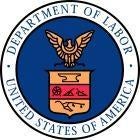The U.S. economy is working its way back from the Great Recession. One indication has been that unemployment insurance claims have steadily fallen since September and they are now at the same level as in March of 2008. Additionally, layoffs are at the same level as in 2006. We also recently learned that the ratio of job seekers to job openings fell to 3.5 in May, continuing its downward trend and reaching nearly the same level as in November 2008. This recovery, like all recoveries, has seen its ebbs and flows, but the trajectory continues to demonstrate a steady path of growth and resilience.
For example, this economic recovery far surpasses the recovery of the early 2000s in terms of private sector job growth and is at par with the recovery of the early 90s. We have seen 4.4 million private sector jobs added to the economy in the last 28 months, with an average of 159,000 jobs added a month since the start of the year.

Recovery comparison: Total private job growth 36 months after the official recession end date
With the exception of government, information and construction, all other sectors of the economy have experienced job growth, including large job gains in the professional and business, education and health, leisure and hospitality, retail, mining, and manufacturing industries.
The manufacturing sector has been an important contributor of jobs. Since January 2010, manufacturing has added more than 500,000 new jobs – the greatest 29 month job growth streak since 1995. In the past year alone, 224,000 jobs were added. Why is this great news? The American manufacturing industry is critical to the health of the national economy. It accounts for 70% of private sector research and development, 60% of U.S. exports and it provides essential goods and equipment directly to consumers as well as to a range of other industries.
The auto industry has also seen a complete turnaround during this recovery. President Obama’s bold plan to save the American auto industry has been a key to its revival. Auto sales are up 22% from this point last year, and they are on track to surpass $14.1 million for the first time since 2007. In the first six months of the year, nearly 7.3 million vehicles were sold in the U.S., representing a 14.8% increase over the first half of 2011. The automobile sector has also experienced the largest job gains in a 3-year period since 1997. When the President took office, the U.S. auto industry was collapsing with more than 910,000 jobs lost between February 2000 and June 2009. Since June 2009, the industry has added more than 239,000 jobs, proving the Administration’s investments were a tremendous success.

Annual Auto Industry Employment Change: 1995 - 2012*
Now, the President is working to maintain the momentum in manufacturing. He has urged Congress to increase tax deductions for manufacturers who create jobs in the U.S. and eliminate deductions for those who ship jobs oversees. The return of manufacturing to the U.S. from China would allow manufacturing to continue to thrive. And according to recent studies, China will no longer be the default low-cost manufacturing location as changes in their labor costs reduce their cost advantage over the U.S. in some products.
We’ve seen first-hand the resilience of the American economy and the American worker. The economy is coming back from its deepest downturn since the Great Depression, and while we have certainly made strides, there is still work left to be done. It is important to realize, however, that despite serious headwinds and global uncertainty, the U.S. economy continues to point towards reasons for optimism.
Adriana Kugler is Chief Economist at the U.S. Department of Labor.


 />i
/>i

